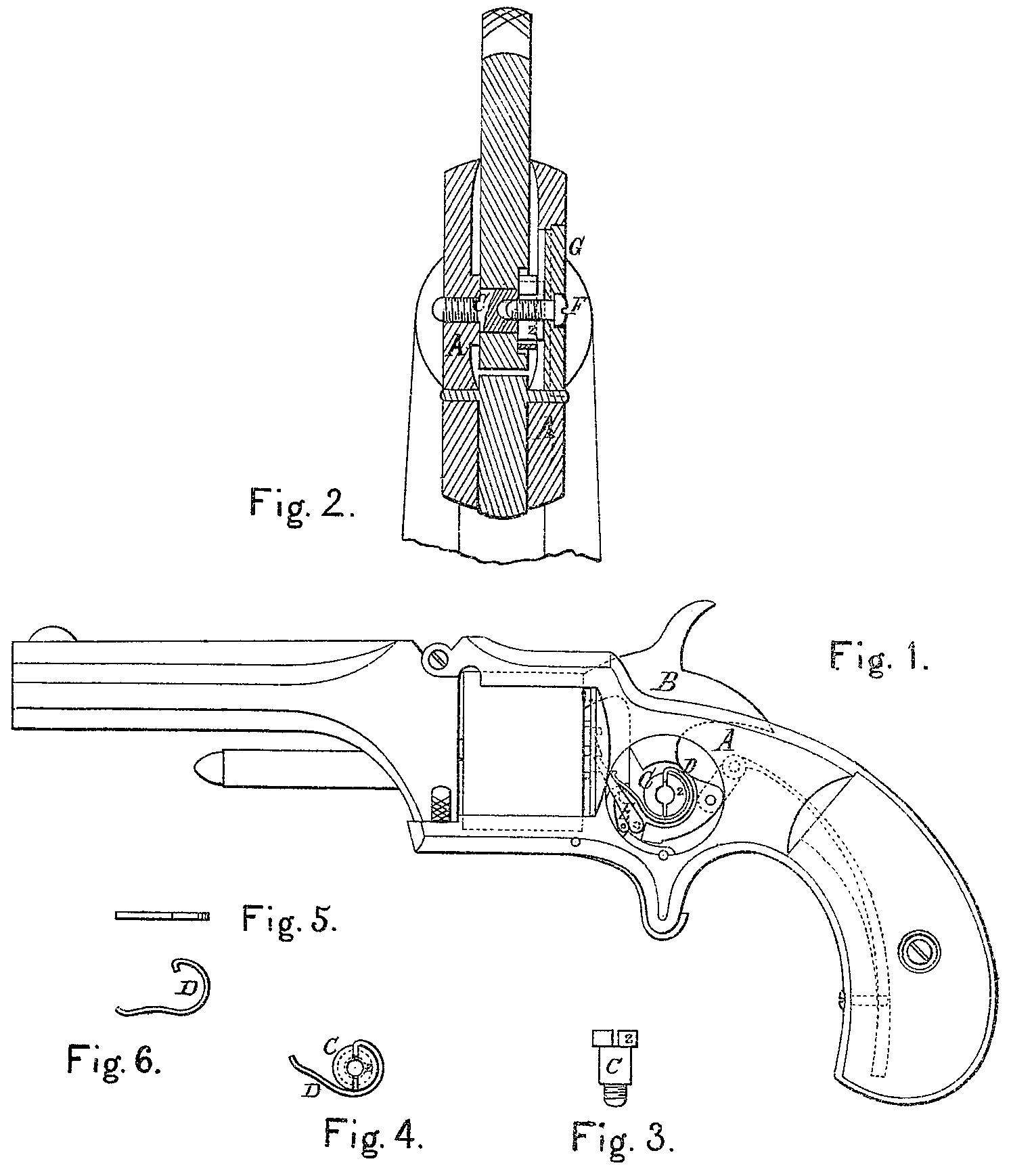US 140516
UNITED STATES PATENT OFFICE.
JOHN M. MARLIN, OF NEW HAVEN, CONNECTICUT.
IMPROVEMENT IN REVOLVING FIRE-ARMS.
Specification forming part of Letters Patent No. 140,516, dated July 1, 1873; application filed May 10, 1873.
To all whom it may concern:
Be it known that I, John M. Marlin, of New Haven, in the county of New Haven and State of Connecticut, have invented a new and valuable Improvement in Revolving Fire-Arms; and I do hereby declare that the following is a full, clear, and exact description of the construction and operation of the same, reference being had to the annexed drawings making a part of this specification, and to the letters and figures of reference marked there on.
Figure 1 of the drawings is a representation of a pistol with the improved parts exhibited. Fig. 2 is a vertical cross-section through the pivot or stud of the hammer. Figs. 3, 4, 5, 6 are details of some of the improved parts of the said pistol.
My invention relates to fire-arms with revolving explosion-chambers; and it consists in the novel and improved construction of those parts which move the cartridge-cylinder, and those which keep the hammer in place.
The object of my invention is to make a fire-arm of the above description in which the hammer is less liable to damage by friction, and less liable to uncertainty in its movements from the same cause, and in which the parts propelling the cartridge-cylinder are less liable to get out of order, and much easier to repair, than the same parts in fire-arms of the old construction.
In the drawings, A represents the lock of a pistol, containing the hammer B, with trigger and spring of ordinary construction. The hammer B turns on a stud, C, which is screwed on one side of the lock, and keeps the hammer in place by its head forming the side bearing. The said stud-head z is slotted, and thereby furnishes a hold for a spring, D, which bears on the propelling-arm E. The propelling-arm E is pivoted to the lower part of the hammer B by a pin, e, and performs the same office which is done by similar pawls in this class of fire-arms, only with more accuracy and reliance. This advantage is owing to the peculiar construction and location of the spring D, which is without any side bearings, and consequently works without side friction, and which is not confined in a slot of such small accommodation of room that it may easily be filled with the condensing parts of the escape-gases, as is apt to be the case with other fire-arms when the spring is more confined. The screw F, which fastens the closing-plate G in the opening on the other side of the lock A, is screwed into the body of the stud C, thus avoiding the use of a through-bolt and its inconveniences.
By the described construction I am enabled to remove the closing-plate G without removing the holds or fastenings of the parts inside the lock. I can remove or insert the spring D without taking the hammer B out of the lock, or even without disturbing its fastenings. I can also clean all the working parts described without removing them from the lock, on account of their easy accessibility. I can also oil them with the same facility, and an thereby fully insured against slipping of the propelling-arm over the ratchet on the cartridge-cylinder for Want of spring-power, or on account of a clogged-up spring; and there is but little danger in this construction that the hammer will, by frequent use, be clogged up between its bearings and become powerless.
What I claim as new, and desire to secure by Letters Patent, is—
The arbor C, provided with a head having a slot therein, whereby the pawl-spring and the hammer are secured, as herein set forth.
In testimony that I claim the above I have hereunto subscribed my name in the presence of two witnesses.
JOHN M. MARLIN.
Witnesses:
John Knight,
John M. Heiny.

